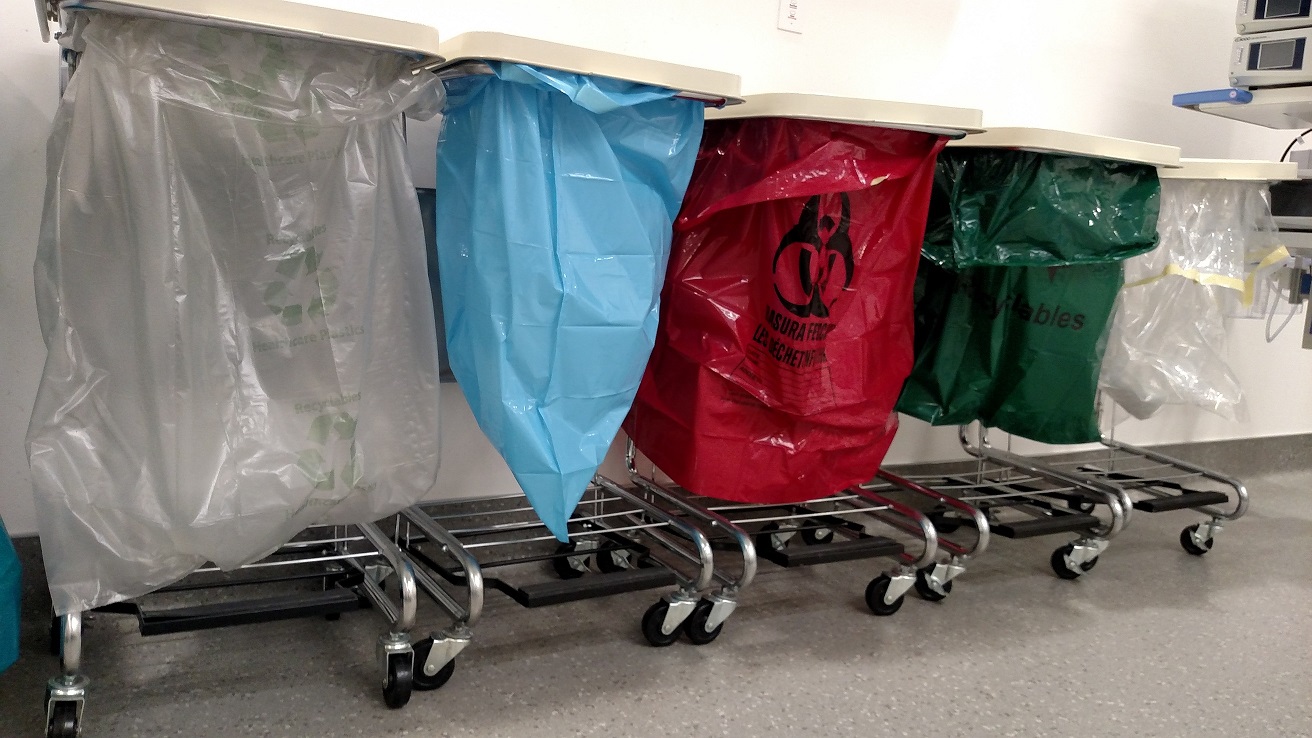Preventing contamination and developing a streamlined materials transfer process are key to a successful recycling program. Work with your recycling partner and your hospital’s EVS team, nursing team, and others that will be involved in the plastics collection, transfer, and dock-out processes to develop a streamlined process for your hospital.
Here are eight helpful tips in developing your plastics recycling program:
1. Colored bags, containers, labels, closures, etc. can be very useful for collecting and sorting the recyclable plastics.
2. Posters, photos and even examples of acceptable materials placed above recycling containers are a handy reference for staff involved in collecting recyclable plastics.
3. Identify a specific location in each area where collected recyclable plastics will be accumulated prior to transfer to the central outgoing waste storage area. Ideally, recyclable plastics are accumulated in a location where other waste materials and recyclables are accumulated to streamline waste management efforts, and so that they can be collected and transferred on the same schedule.
4. Think creatively about how to make the best use of limited space. Is there an underutilized spot that might be able to share functionality? Perhaps a bin that is usually used for soiled linens, but which is idle when the cleaned room is being prepared for the next case and plastics waste is being generated?
5. Transparent tinted bags are ideal so that the MRF/recycler can confirm there is no medical waste in the waste stream. The safety of all people involved in the process is very important.
6. Train all staff involved in the plastics recycling program on the colored indicators, signs, labels, materials flow, etc. Use flow diagrams or the plastics mapping tool to show material flow and logistics from point of use, material collection, internal transfer to central waste storage area, and final pick-up by the MRF or recycler.
7. Carefully consider available space and recycling/processing wait times and schedules when developing a logistics plan. For example, how much space is available within the functional area or department for collecting and accumulating recyclable plastics before someone picks up the material and transfers it to a central dock-out area? How much space is available within the central dock-out area before your recycler picks up the materials?
8. Have a few people test the recycling process and offer feedback before the procedures and training materials are finalized. You may discover something that seems obvious to you is not so obvious to someone else, or that there are adjustments needed before the full plan is rolled out.

